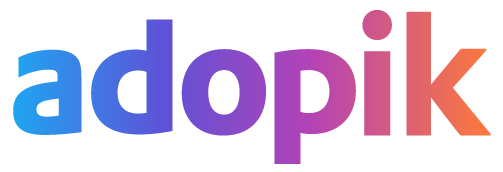
10 Graphic Design Trends That Will Shape the Future of Creativity
by Adopik Team
The world of graphic design is constantly evolving. As technology advances and cultural trends shift, designers must adapt to stay relevant. From bold typography to immersive 3D visuals, here are 10 trends that are set to shape the future of graphic design in the coming years.
1. Minimalism with a Twist
Minimalism has always been popular, but designers are now finding ways to break the rules while staying true to its principles. Expect to see clean designs that incorporate unexpected elements like vibrant colors, asymmetrical layouts, or surprising imagery to create striking yet simple visuals.
2. Bold Typography
Typography is no longer just a functional element—it’s becoming the star of the show. Designers are embracing oversized fonts, custom typefaces, and playful arrangements to make text not only readable but also visually engaging. This trend lets the message be the design itself.
3. 3D Design and Illustration
As 3D technology becomes more accessible, designers are increasingly using it to create stunning, immersive visuals. From hyper-realistic renders to cartoonish 3D illustrations, this trend brings depth and dynamism to graphic design, making it feel more interactive and engaging.
4. Organic Shapes and Fluid Lines
Organic shapes and fluid, flowing lines are replacing rigid, geometric patterns. This shift reflects a move towards more natural, approachable designs. Whether in backgrounds, illustrations, or logo designs, these elements add a sense of movement and creativity, making visuals feel less artificial.
5. Sustainability and Eco-Friendly Design
As the world becomes more environmentally conscious, so does design. Brands are prioritizing eco-friendly visuals, earthy tones, and designs that communicate sustainability. Whether it’s through the use of recycled materials in packaging or green-themed branding, this trend will only grow in importance.
6. Muted Color Palettes
While bold colors aren’t going anywhere, there’s a noticeable shift towards more muted tones. These subtle, understated palettes create a sense of calm and sophistication, making them perfect for brands that want to appear trustworthy and modern.
7. Retro Futurism
Combining nostalgia with cutting-edge technology, retro futurism blends old-school design elements with a futuristic twist. Expect neon lights, cyberpunk aesthetics, and bold geometric patterns reminiscent of early sci-fi films. This trend appeals to both nostalgia and innovation, creating a unique blend of past and future.
8. Abstract and Surrealist Art
Abstract and surrealist design is gaining momentum as designers move beyond traditional boundaries. Combining reality with dreamlike elements, these designs evoke emotion and intrigue. Expect to see more unexpected compositions that challenge the viewer’s perception of space and form.
9. Motion Graphics
With the rise of video content across platforms, motion graphics are becoming essential. Static visuals are being replaced with animations that bring designs to life. Whether it’s subtle animations on websites or full-blown animated ads, motion adds a dynamic element to graphic design that captivates audiences.
10. Design for Accessibility
As inclusivity becomes more important, designers are focusing on making their work accessible to everyone. This includes considering color contrast for readability, using clear fonts, and designing with different abilities in mind. Accessibility is not just a trend; it’s a shift towards more thoughtful and universal design.
Conclusion
These emerging trends highlight the ever-changing nature of graphic design. From bold new uses of typography to the incorporation of 3D elements and motion, designers are constantly pushing the boundaries of creativity. By staying on top of these trends, you can ensure your designs remain fresh, innovative, and relevant in an ever-evolving industry.
Keep creating!




